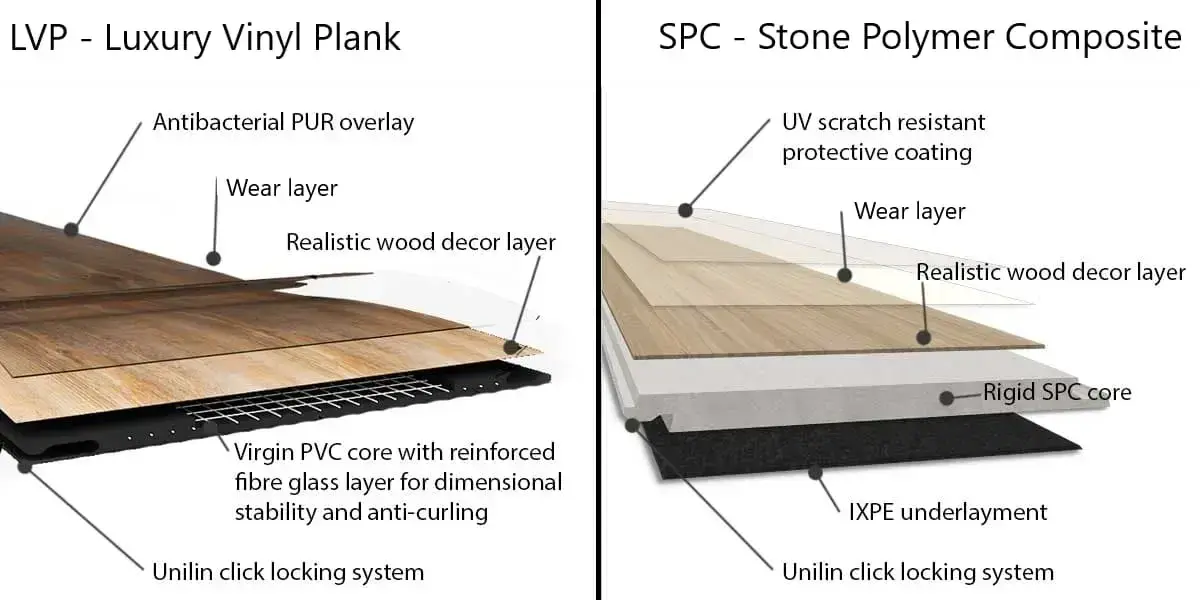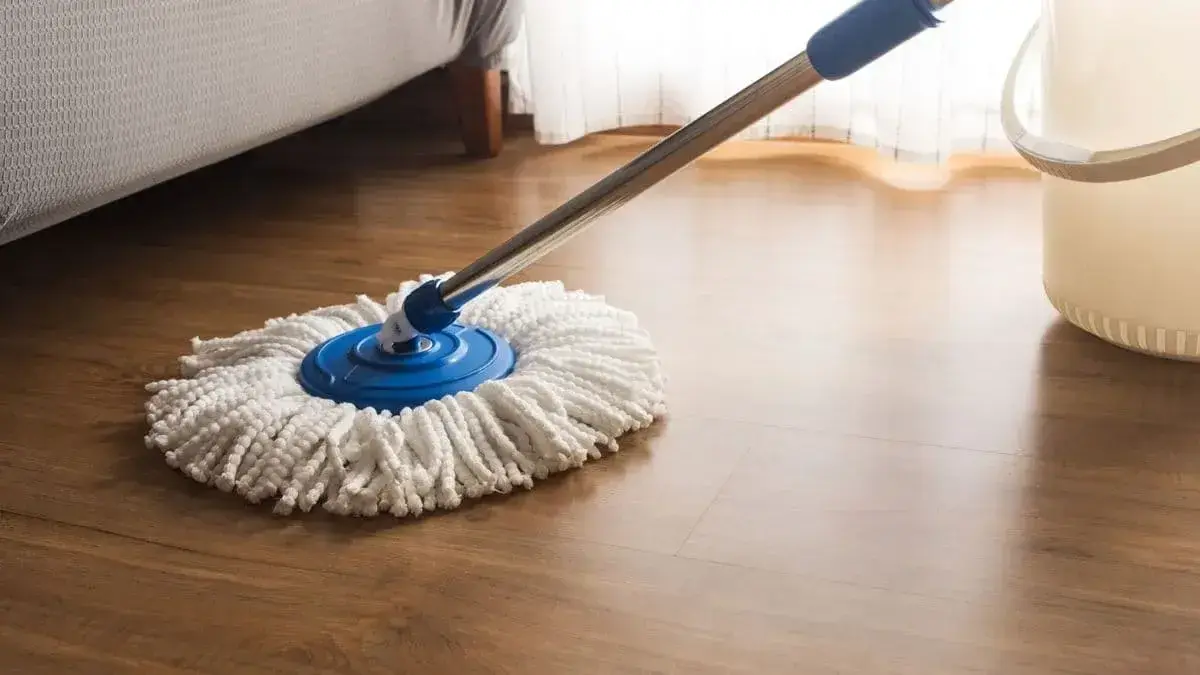What is SPC Flooring?
January 3, 2025

Understanding the key differences between Stone Polymer Composite (SPC) and Luxury Vinyl Plank (LVP) flooring is crucial to guide flooring customers towards the best product for them. While both options have revolutionized the flooring industry, each has distinct advantages that make them suitable for different applications. In this comprehensive guide, we'll explore SPC vs LVP flooring, providing you with essential knowledge and selling points to help your customers make informed decisions.

Before diving into the specifics, let's clarify what makes these materials unique. Both SPC and LVP fall under the category of luxury vinyl flooring, but their core compositions differ significantly.
LVP (Luxury Vinyl Plank)
- Flexible core made primarily from PVC
- Softer and more pliable
- Generally thicker overall profile (8-12mm)
- More cushioning effect underfoot
SPC (Stone Polymer Composite)
- Rigid core made from limestone powder, polyvinyl chloride, and stabilizers
- Higher density and harder feel underfoot
- Typically thinner overall profile (5-8mm)
- Superior dimensional stability
Durability and Performance Comparison
When discussing SPC vs LVP with your customers, durability often becomes a central focus. Here's how they compare:
Impact Resistance
SPC flooring's rigid core provides exceptional resistance to impacts and dents, making it ideal for high-traffic commercial spaces. LVP, while durable, may show signs of denting under heavy furniture or equipment due to its softer composition.
Temperature Stability
One of SPC's standout features is its superior stability across temperature variations. Unlike traditional LVP, SPC maintains its shape even in environments with significant temperature fluctuations, making it perfect for spaces with large windows or varying climate conditions.
Water Resistance
Both SPC and LVP offer excellent water resistance, but SPC's dense core provides additional protection against moisture damage. Neither material will swell or warp when exposed to water, making them suitable for bathrooms, kitchens, and other moisture-prone areas.
Installation Considerations
Subfloor Requirements
When comparing SPC vs LVP, subfloor preparation requirements can be a significant differentiator:
- SPC: More forgiving of minor subfloor imperfections due to its rigid construction
- LVP: Requires more thorough subfloor preparation to prevent telegraphing
Installation Methods
Both products typically feature click-lock installation systems, but SPC's rigidity can make it easier to install over larger areas without transition strips.
Commercial Applications and Benefits
High-Traffic Areas
SPC flooring excels in commercial environments due to its superior wear resistance. When selling SPC vs LVP for commercial applications, emphasize these key benefits:
Enhanced scratch resistance
Superior dent resistance
Better sound dampening properties
Excellent stability under heavy rolling loads

Cost Considerations
While initial costs may be similar, the total cost of ownership often favors SPC in commercial settings:
- Longer lifespan in high-traffic areas
- Reduced maintenance requirements
- Lower replacement frequency
- Better warranty coverage for commercial applications
Environmental Considerations
Indoor Air Quality
Both SPC and LVP can be manufactured to meet strict indoor air quality standards, but SPC often has an edge due to:
- Lower VOC emissions
- Better resistance to mold and mildew
- Improved chemical stability
Sustainability
Modern SPC and LVP products often incorporate recycled materials and sustainable manufacturing practices. However, SPC's limestone content can be marketed as a more natural component compared to traditional LVP's all-synthetic composition.
Selling Points for Different Customer Types
Property Managers
When selling SPC vs LVP to property managers, emphasize:
- Lower maintenance costs
- Superior durability in common areas
- Better sound insulation between floors
- Excellent resistance to tenant damage
Commercial Contractors
For contractors handling large commercial projects, highlight:
- Faster installation times
- Reduced need for floor preparation
- Better warranty coverage
- Superior performance under heavy equipment
Retail Store Owners
Retail environments benefit from:
- Better resistance to high heel damage
- Superior performance under display cases
- Excellent cleaning and maintenance properties
- Professional appearance retention

Making the Right Recommendation
Questions to Ask Your Customers
To guide customers toward the right choice between SPC vs LVP, consider these key questions:
What is the primary use of the space?
What is the expected foot traffic volume?
Will there be heavy furniture or equipment?
What are the temperature variation conditions?
What is the project budget, both short and long-term?
Maintenance and Care
Daily Maintenance
Both flooring types are easy to maintain, but there are slight differences:
SPC:
- Requires minimal specialized cleaning products
- Better resistance to cleaning chemicals
- Can handle more aggressive cleaning methods
LVP:
- May require gentler cleaning approaches
- More susceptible to chemical damage
- Better natural shine retention

Conclusion: Making the SPC vs LVP Decision
While both SPC and LVP offer excellent flooring solutions, SPC's superior durability and stability make it the preferred choice for most commercial applications. When guiding customers through the decision-making process, focus on their specific needs and use cases to recommend the most appropriate option.
Remember these key takeaways when discussing SPC vs LVP with your customers:
- SPC offers better durability and stability
- Both products provide excellent water resistance
- SPC typically performs better in commercial settings
- Installation requirements favor SPC for large spaces
- Long-term cost benefits often favor SPC
By understanding these differences and effectively communicating them to your customers, you can help them make informed decisions that best serve their specific needs and requirements.